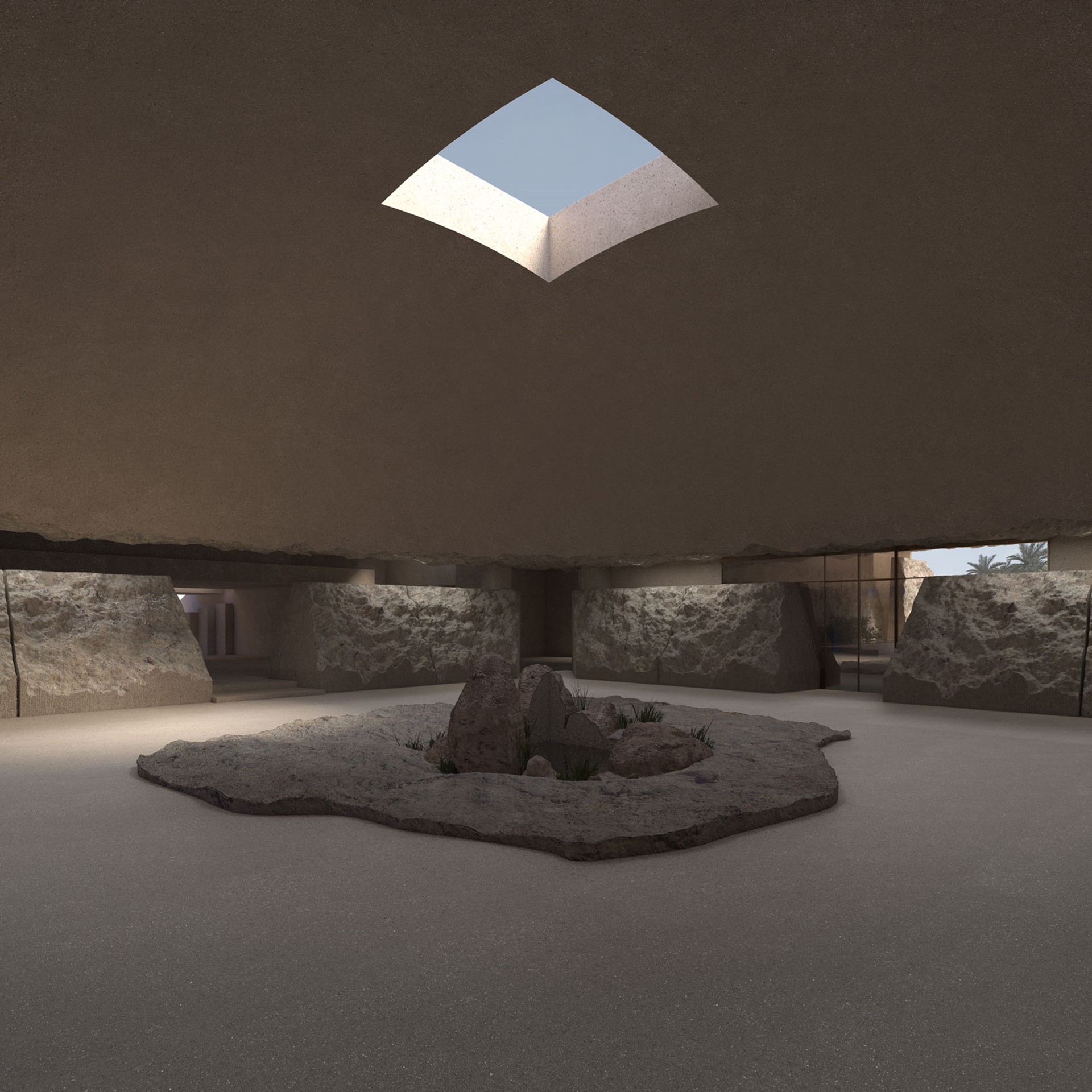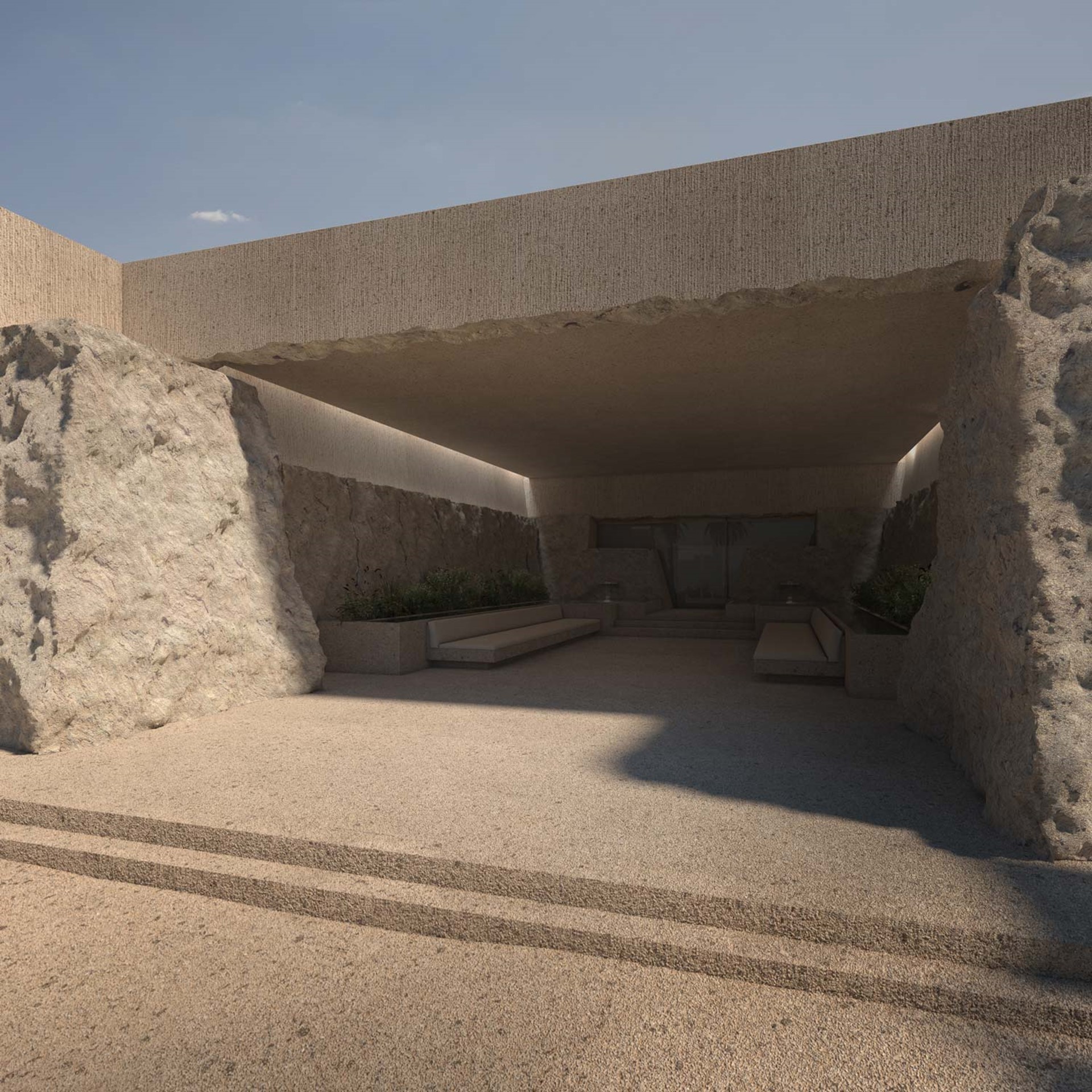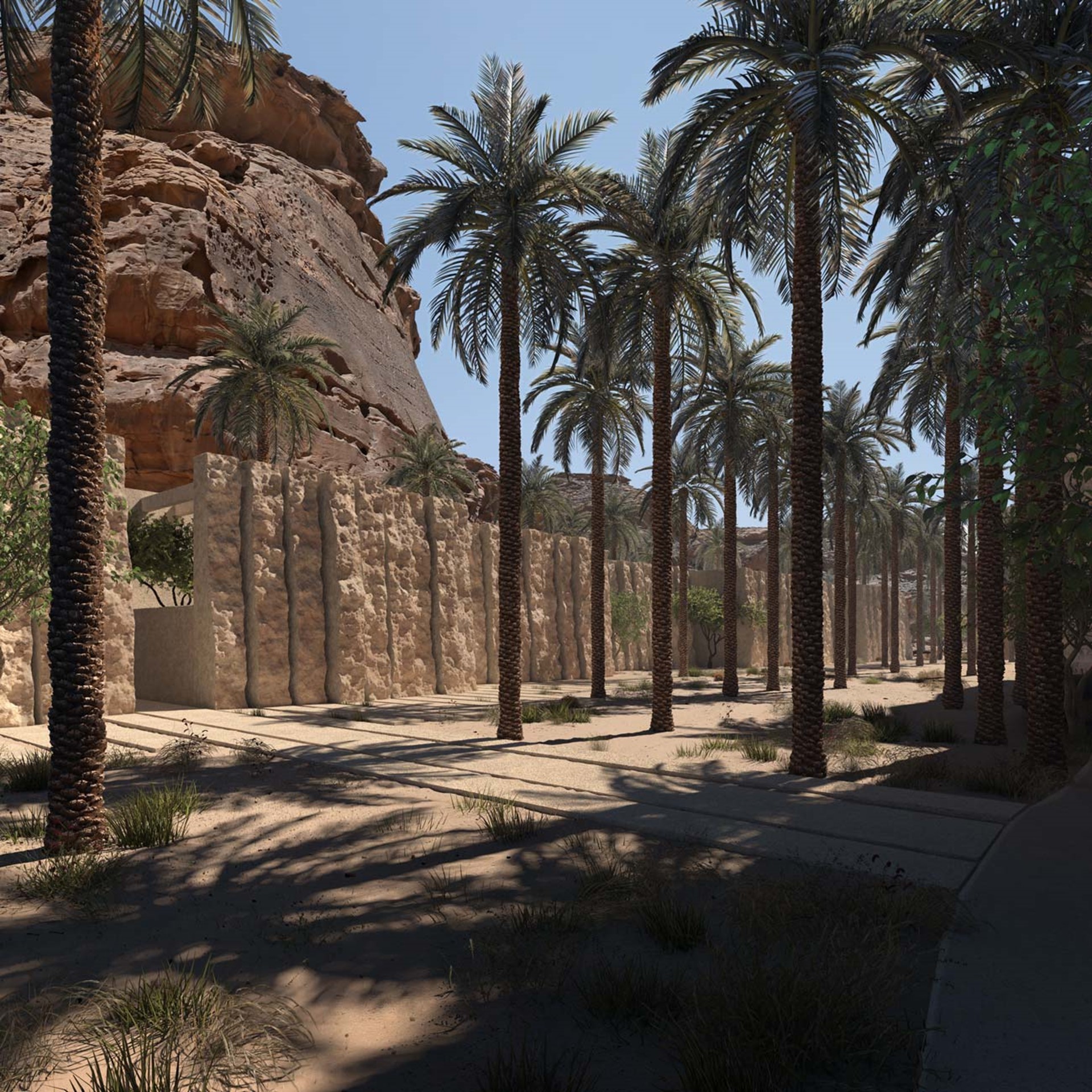The Governor’s Residence proposal reflects the architectural and natural heritage of its rich context, Al Ula, whose roots and origins are multiple, complex, and layered, representing millennia of human habitation and cross-cultural exchange in that particular region of Saudi Arabia.
The approach fundamentally deals with summoning memory transmitted through the region's history, encompassing its architectural typologies, archaeology, and geology. These elements develop compositionally as a series of fragments that emerge from the landscape. This contextual refraction into new assemblages defines a dynamic identity and delineates cultural and historical continuity.
The residence attempts to have as little impact on the landscape as possible by concealing most of its program within a landscape gesture, while only revealing parts of the program (entries, windows, terraces, etc.). The general idea presents the residence as a series of archaeological fragments that appear to be excavated or sculpted out of a sand dune. This integration with the topography is achieved by embedding the residence within a constructed sand dune, allowing only specific parts to be visible or identifiable as built forms. Following Nabataean paradigms, the proposal renders the landscape and nature inhabitable through a formal and spatial extraction of natural matter.
This aspect allows the scale and appearance of the residence to be manipulated in a manner that maintains the landscape as the main protagonist of the visual experience. The image thus consists of fragments that are pictorially dispersed on an undisturbed desert landscape. This clear archaeological reference also aligns with the general principles of desert architecture, which often produce protected and introverted spaces of substantial weight, constructed from local materials and integrated with built-in natural systems of climate control.
Another challenge this project addresses is redefining domestic space and program in terms of what it represents as a residence with an official role and its position within a world heritage context. Both aspects transform the idea of domestic space into an entity that communicates the internalization of national heritage and identity as a means of defining and expressing its official persona.









